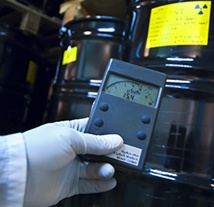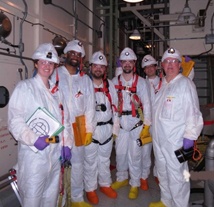In the June 2016 issue of ChemicalProcessing.com, Editor in Chief Mark Rosenweig writes an informative piece, "Achieve Better Safety Training: New Interactive videos put participants in the midst of an event". The article focuses on safety training to prevent incident/accident hindsight bias.
IChemE Safety Center (ISC) in Melbourne, Australia is among the first to tackle effective safety training by using real case scenario video whereby trainees have to make decisions in actual situations.
Per Rosenweig's interview of ISC Director Trish Kerin, “'Once the context is set, the events that led up to the incident start to unfold. At suitable points in the story, the audience are given a chance to make a pivotal decision… the facilitator then discusses the audience decision before restarting the video to see what decision was made by the people involved in the real event. Each case study typically has three decisions to be made. Interestingly, the participants often make the same decisions that were made in the real event. This can be a very eye-opening experience for the participants,'
The ISC hopes that engaging the audience in the incident in this way will lead to better retention of the lessons learned."
Genius.
Especially, if done in tandem with a complete facility/plant safety hazard assessment per all Authorities Having Jurisdiction (AHJs) and relevant regulatory agencies such as Occupational Health and Safety Association (OSHA), National Fire Protection Agency (NFPA), National Emphasis Program (NEP), European Standards (EN) and, so on.
Among some of these assessments: Process Hazard Analysis (PHA), Combustible Dust Hazard Assessment (DHA) Explosion and Fire Hazard Evaluation, Hazard Identification Risk Analysis, Consequence Analysis, Safer Process Scale-up, Process Safety Management (PSM) Program Development, and Relief System Design Review - for chemical, industrial and manufacturing plants.
And, for nuclear plant facilities: Acoustic Analysis, Debris Intrusion, Cable Health Aging Management Program (CHAMP™), Chemical and Radioactive Waste Safety, Circuit Analysis/Fire Modeling, Commercial Grade Dedication/Reverse Engineering and Obsolesence Replacement, Custom Engineering, Decontamination & Decommissioning (D&D) Process Engineering, Equipment Qualification (EQ), Electromagnetic Radiation Compatibility EMC, Fire Modeling, Loss of Coolant Accident (LOCA) Test Chamber, Severe Accident Mitigation/ Prevention/ Analysis, Waterhammer, Facility Flow, Aerosol, Thermal and Explosion Model (FATE™) 2.0, Seismic Walkdowns/Structural Engineering, Post-Fukushima Engineering areas.
For privacy reasons, we cannot reveal many of our customers real case scenarios - and, quite often, we are brought in to prevent accidents/recurring accidents in the first place. If videos simulations can encourage true reaction, discussion and "emotion" in the moment, then actions can be observed and modified. The appeal is also in that it can especially engage the kinesthetic/tactile learner versus just the auditory or visual in the form of a lecture.
Writes Rosenweig per Kerin: "'The ISC launch includes three case studies: “A Tank Farm,” “A Gas Plant” and “A Coal Mine.” Each one costs £250 (about $365) and consists of a series of short videos totaling 35–40 minutes as well as facilitation notes, all on a USB memory stick. The ISC opted for videos to ensure consistent presentation of material and foster reuse of the training tool. The package is designed for companies to use internally without having to bring in outside specialists.
Each case study has key learning points that are relevant regardless of the industry you work in. For example, ‘A Coal Mine’ focuses on engineering decision-making and risk assessment, whereas ‘A Gas Plant’ focuses on operational decision-making,” Kerin notes. “The videos take the time to explain how the facilities work, so no pre-knowledge is necessary.'”
Way to go. Look forward to further incorporating our existing computer modeling and prevention probabilities methodologies with real case video scenarios.
For more information regarding PHAs, DHAs, PSMs, Seismic/Structural Walkdowns and severe accident prevention programs and testing, contact Zach Hachmeister, Director of Business & Services at 630-887-5223 or hachmeister@fauske.com.









